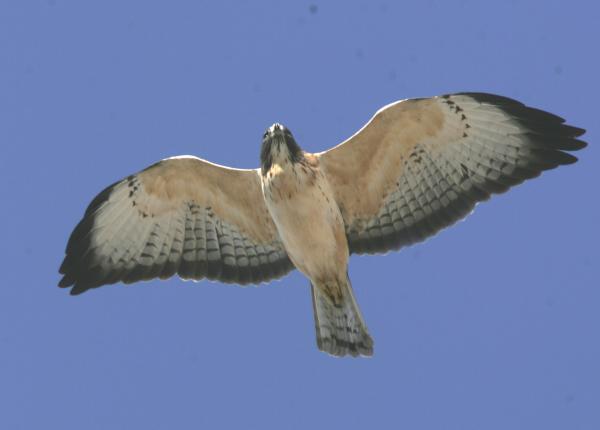Did You Know?
- The Short-tailed Hawk has two color morphs: a dark morph and a light morph.
- This hawk is one of the least studied raptors in the United States
- This buteo feeds primarily on other birds
How The Peregrine Fund is Helping
Though The Peregrine Fund doesn't work directly with Short-tailed Hawks, our efforts in scientific research, habitat conservation, education, and community development help conserve birds of prey around the world. We also supply literature to researchers from our avian research library, which helps scientists around the world gather and share important information on raptor conservation. We also support the Neotropical Raptor Network - a group that helps conserve birds of prey by improving communication and collaboration among raptor enthusiasts throughout the region!
Where They Live
The Short-tailed Hawk lives throughout much of the Americas. In the United States it is found only in south eastern Florida. It is also found in parts of Mexico, through Central America, Trinidad and the northern countries of South America. This beautiful raptor makes its home in a variety of lowland and middle elevation habitats including forest edges, second-growth, open country, and savannas with scattered trees and woodland. This hawk is often found occupying habitats that are close to water.
What They Do
With a name like Short-tailed Hawk, it would be easy to assume that this raptor has a particularly short tail. However, compared to its body size, its tail length is about average, when compared to other buteos of similar size. This hawk is diurnal, meaning it is active during the daytime and roosts, or rests, at night. During the day, this lovely hawk spends a lot of time soaring. They are considered solitary species, meaning they spend most of their time along, though they sometimes have been observed flying in groups of a few individuals.
Why They Need our Help
Though the Short-tailed Hawk is categorized as a species of Least Concern, it still faces many threats including shooting by people, poisoning by pesticide use, collisions with vehicles and windows, and even loss or degradation of habitat.
What They Eat
While the Short-tailed Hawk feeds primarily on other birds, such as ground doves, it will also take rodents, lizards, snakes, and even insects. It uses a few different hunting techniques in order to catch this variety of prey. It most often hunts on the wing, diving into the canopy to catch its prey. It will also sometimes hunt from a perch. In Florida, this hawk seems to feed mainly on small birds, such as Eastern Meadowlarks and Red-winged Blackbirds.
Nests, Eggs, and Young
Biologists studying this species in Florida have observed Short-tailed Hawks nesting at the top of tall trees in bulky, platform nests built of sticks which are lined with green leaves. The female will lay around 2 eggs, which are white or bluish-white with heavy brown markings.
Once the eggs are laid, the female will spend the next 32 to 39 days incubating and otherwise protecting her eggs. During this time, the male will work hard to catch food for himself and the female. When the nestlings hatch, they are covered in fluffy white down. Over the next few weeks the young hawks will grow quickly. However, biologists don't know how long the young stay in the nest before they fledge, or how long they remain dependent on their parents' care.
As you can see, there is still a lot for scientists to learn about the nesting habits of the Short-tailed Hawk.
Short-tailed Hawk and the World Center for Birds of Prey
The World Center for Birds of Prey offers fun ways to learn about all birds of prey. Interactive activities, tours, interesting videos, and a children's room with activities from coloring sheets to quizzes to costumes await you. The visitor center has many live raptors on display, including several buteo species including a Red-tailed Hawk and a Swainson's Hawk. This is a great chance to see birds of prey up close and learn about the wonderful and interesting adaptations they have in order to survive in their respective habitats. There is also a touch table with feathers and other natural objects available for exploration.
References:
https://www.allaboutbirds.org/guide/Short-tailed_Hawk/id
Global Raptor Information Network. 2022. Species account: Short-tailed Hawk Buteo brachyurus. Downloaded from http://www.globalraptors.org on 29 Mar. 2022
Miller, K. E. and K. D. Meyer (2020). Short-tailed Hawk (Buteo brachyurus), version 1.0. In Birds of the World (A. F. Poole and F. B. Gill, Editors). Cornell Lab of Ornithology, Ithaca, NY, USA. https://doi.org/10.2173/bow.shthaw.01









